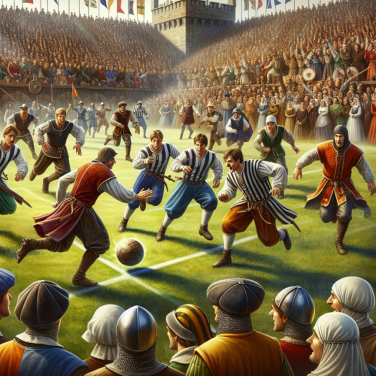Unlocking the Secrets of Ball Bounce: An Exploration of Elasticity and Energy Transfer
The fundamental principles of physics that govern the simple act of a ball bouncing are both complex and captivating. At the core of this occurrence lies the interplay between elasticity and energy transfer, inherent properties that dictate how a ball behaves when it makes contact with a surface.
When a ball is dropped, it starts with a certain amount of potential energy, which is dependent on its mass and the height from which it is dropped. As the ball falls, this potential energy is converted into kinetic energy, the energy of motion. Upon hitting a surface, if the ball is elastic, it deforms, squashing against the ground. This deformation is a key aspect of the energy transfer process.
The elasticity of the ball’s material determines how effectively it can deform and then return to its original shape. A highly elastic ball squashes and then springs back quickly, minimizing the time it is in contact with the ground. This rapid change from a deformed state back to an undistorted shape is made possible by the stored elastic potential energy, which now converts back into kinetic energy as the ball resumes its shape. It is this transformation that propels the ball upwards and allows it to bounce.
Materials with high elasticity, such as rubber, are masterful in conserving the energy generated from the fall. When a ball made of such material hits a hard surface, only a small part of the energy is lost to other forms such as heat, sound, and the slight deformation of the surface it bounces on. However, if the ball is less elastic, like a ball of clay, a greater amount of energy is dissipated, resulting in a mediocre bounce or no bounce at all.
In addition to the material's elasticity, the surface on which the ball is bouncing plays a significant role in energy transfer. A rigid and inflexible surface like concrete provides a quick rebound, allowing the ball to bounce back with minimal energy loss. On the other hand, a soft surface like grass or carpet absorbs more energy during the collision, leading to a less lively bounce.
Moreover, air resistance and spin can affect the bounce of a ball. As a ball travels through the air, it pushes against air molecules, which slows it down slightly. The surface roughness and the ball's spin resulting from its descent or player interaction can further affect how it bounces, due to the asymmetry in the forces applied during impact.
Read also:
Elevating Athletic Performance: A Comprehensive Guide to Sports Nutrition
From Drop to Rebound: Understanding the Forces at Work During a Ball's Bounce
Bouncing balls captivate us, whether in sports, play, or as demonstrations in physics classrooms. The journey a ball takes from the moment it leaves one’s hand to when it contacts the surface and leaps back into action is a symphony of physical laws at play. The underlying reasons for its behavior lie in the energy transformations, as well as the ball's material properties and the nature of the surface it encounters.
When a ball is dropped, it begins its journey with potential energy, directly related to its height. As the ball falls, the force of gravity accelerates it downward, converting this potential energy into kinetic energy. Just before impact, the ball possesses maximum kinetic energy and minimal potential energy.
The moment the ball touches the ground is where the fascinating physics really come to life. Upon impact, the ball deforms, squashing against the surface. This deformation is critical, as it's a result of energy transfer. Specifically, the kinetic energy that was propelling the ball downwards is now being converted into another form of energy, known as elastic potential energy, which is stored in the deformed ball.
However, no bounce is perfectly efficient. Some of the ball's energy is lost as thermal energy due to friction and sound, dissipating into the environment, and this is why a ball doesn't bounce back to its original height.
The material the ball is made from significantly influences how it bounces. Balls designed for bouncing, such as rubber balls, have materials with high elasticity. This quality allows them to store a large proportion of the energy from the fall and release it effectively when they rebound. On the other hand, balls made from less elastic materials, such as a lump of clay, would not bounce since they absorb most of the energy in the impact without rebounding.
The rebound happens because the deformed ball snaps back to its original shape, releasing the stored elastic potential energy back into kinetic energy. This energy now propels the ball upwards against the force of gravity.
Surface interaction also has a vital role. A harder surface, such as concrete, deforms less than the ball and allows for a quicker and stronger bounce back, while a soft surface, like carpet, absorbs more energy, leading to a weaker bounce.
In essence, a ball’s bounce is not just a simple action but a complex interaction of the ball’s material properties, the energy conversion between kinetic and potential forms, the laws of conservation of energy, and the specifics of the impact surface.




